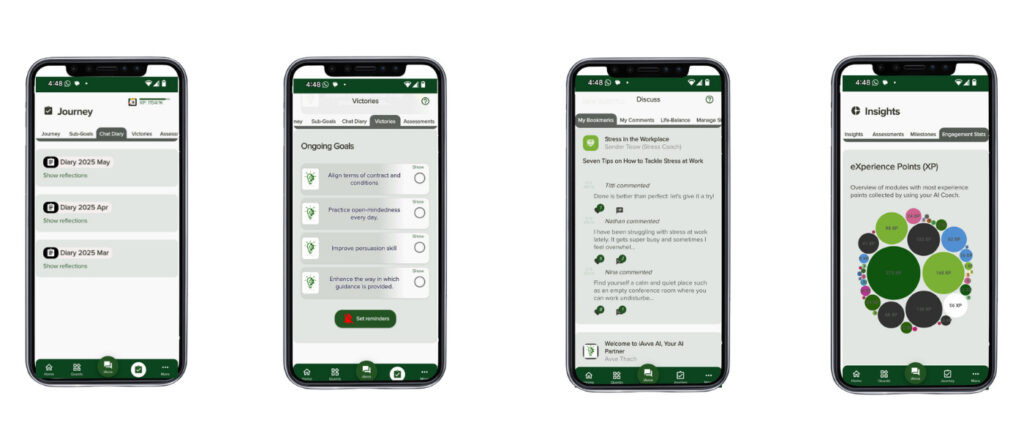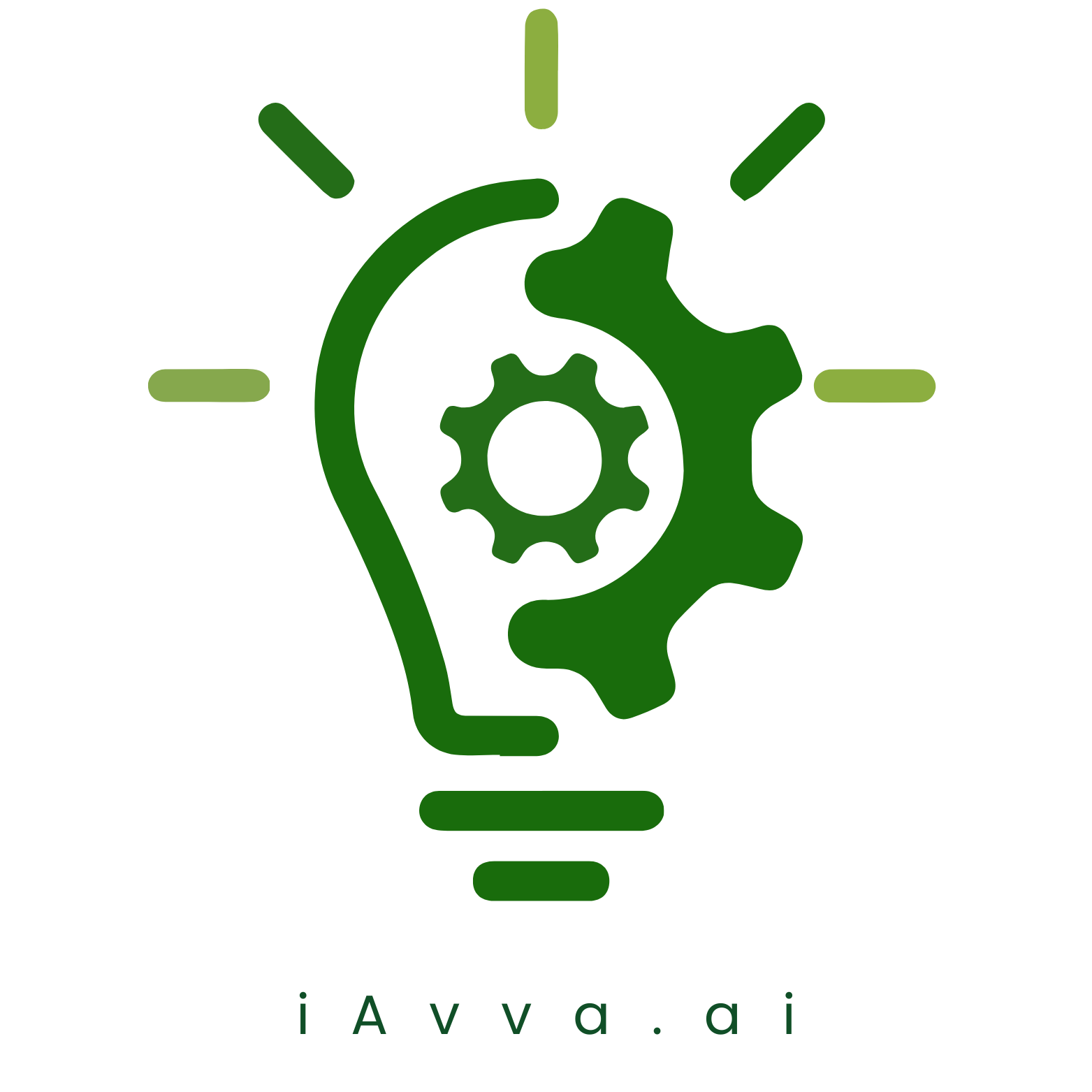Artificial Intelligence (AI) is transforming the business landscape. It is not just a buzzword; it is a powerful tool that can enhance efficiency, improve decision-making, and drive innovation. AI can analyze vast amounts of data quickly, providing insights that were previously unattainable.
This capability allows businesses to respond to market changes swiftly and effectively. For HR leaders and IT executives, understanding AI’s role is crucial for integrating it into their strategies. AI can automate routine tasks, freeing up employees to focus on more strategic initiatives.
For instance, chatbots can handle customer inquiries, while machine learning algorithms can predict employee turnover. This shift not only improves productivity but also enhances employee satisfaction. By embracing AI, organizations can create a more agile workforce that is better equipped to meet the demands of a rapidly changing market. Download iAvva AI https://iavva.my-ai.coach/#/
Key Takeaways
- AI can play a crucial role in improving business operations and decision-making processes.
- It is important to clearly identify business objectives and challenges before implementing AI solutions.
- Assessing data quality and infrastructure readiness is essential for successful AI implementation.
- Choosing the right AI technologies that align with business needs is critical for success.
- Building a skilled AI team and developing a roadmap for implementation are key factors in ensuring successful AI integration.
Identifying Business Objectives and Challenges
Before implementing AI, it is essential to identify clear business objectives. What problems are you trying to solve? Are you looking to improve customer service, streamline operations, or enhance employee training?
Defining these objectives will guide your AI strategy and ensure that it aligns with your overall business goals. Additionally, understanding the challenges your organization faces is equally important.
Is there resistance to change among employees? By addressing these challenges upfront, you can create a more conducive environment for AI adoption. Engaging stakeholders from various departments will provide valuable insights into the specific needs and pain points of your organization.
Assessing Data and Infrastructure

Data is the backbone of any AI initiative. To leverage AI effectively, organizations must assess their existing data and infrastructure.
Are your data sources reliable? Is the data structured or unstructured? Understanding these aspects will help you determine whether your organization is ready for AI implementation.
Moreover, the infrastructure must support AI technologies. This includes having the right hardware and software in place. Cloud computing has become a popular choice for many organizations, as it offers scalability and flexibility.
By investing in robust infrastructure, businesses can ensure that they are well-equipped to handle the demands of AI applications.
Choosing the Right AI Technologies
| AI Technology | Advantages | Challenges |
|---|---|---|
| Machine Learning | Ability to learn and improve from experience | Requires large amounts of data for training |
| Natural Language Processing | Understanding and processing human language | Complexity in understanding context and nuances |
| Computer Vision | Interpreting and understanding visual information | Accuracy can be affected by variations in lighting and angles |
| Deep Learning | Capable of handling large and complex datasets | Requires high computational power and resources |
With numerous AI technologies available, selecting the right ones for your organization can be daunting. It is essential to align technology choices with your business objectives. For example, if your goal is to enhance customer experience, natural language processing (NLP) tools may be beneficial.
On the other hand, if you aim to optimize supply chain management, predictive analytics could be more appropriate. Additionally, consider the ease of integration with existing systems. The chosen technologies should complement your current processes rather than disrupt them.
Collaborating with IT teams and AI solution architects can help ensure that you make informed decisions about technology adoption.
Building a Skilled AI Team
A successful AI strategy requires a skilled team that understands both the technology and the business context. This team should include data scientists, machine learning engineers, and domain experts who can bridge the gap between technical capabilities and business needs. Investing in training and development programs will empower your team to stay updated on the latest AI trends and best practices.
Moreover, fostering a culture of collaboration is vital. Encourage cross-functional teams to work together on AI projects. This collaboration will not only enhance creativity but also ensure that diverse perspectives are considered in decision-making processes.
Developing a Roadmap for Implementation

Creating a roadmap for AI implementation is crucial for ensuring a structured approach. This roadmap should outline key milestones, timelines, and responsibilities. Start with pilot projects that allow you to test AI applications on a smaller scale before full-scale deployment.
This iterative approach minimizes risks and provides valuable insights for future initiatives. Regularly reviewing and updating the roadmap is essential as well. The business landscape is constantly evolving, and your AI strategy should adapt accordingly.
By remaining flexible and responsive to changes, you can maximize the impact of your AI initiatives.
Ensuring Ethical and Responsible AI Use
As organizations increasingly rely on AI, ethical considerations must be at the forefront of decision-making. It is essential to establish guidelines for responsible AI use that prioritize transparency, fairness, and accountability. This includes addressing potential biases in algorithms and ensuring that data privacy regulations are adhered to.
Engaging stakeholders in discussions about ethical AI practices fosters trust within the organization and among customers. By demonstrating a commitment to responsible AI use, businesses can enhance their reputation and build stronger relationships with their stakeholders.
Measuring and Evaluating AI Performance
To gauge the success of your AI initiatives, it is crucial to establish key performance indicators (KPIs). These metrics should align with your business objectives and provide insights into the effectiveness of your AI applications. Regularly monitoring performance allows you to identify areas for improvement and make data-driven decisions.
Additionally, gathering feedback from users is invaluable. Employees who interact with AI tools can provide insights into usability and effectiveness. By incorporating this feedback into your evaluation process, you can continuously refine your AI strategy.
Adapting and Iterating AI Strategy
The journey of AI implementation is not linear; it requires ongoing adaptation and iteration. As new technologies emerge and market conditions change, organizations must be willing to pivot their strategies accordingly. Regularly revisiting your objectives and assessing performance will help you stay aligned with your business goals.
Encouraging a culture of experimentation within your organization fosters innovation. Allow teams to explore new ideas and approaches without fear of failure. This mindset will enable you to uncover new opportunities for leveraging AI in ways that drive value for your business.
Leveraging AI for Competitive Advantage
Organizations that successfully integrate AI into their operations gain a significant competitive advantage. By automating processes, enhancing decision-making, and improving customer experiences, businesses can differentiate themselves in the market. For instance, companies that utilize predictive analytics can anticipate customer needs and tailor their offerings accordingly.
Moreover, leveraging AI for talent management can lead to better hiring decisions and employee retention rates. By analyzing employee data, organizations can identify high-potential candidates and create personalized development plans that align with their career aspirations.
Case Studies and Best Practices
Real-world examples illustrate the transformative power of AI in business. For instance, a leading retail company implemented an AI-driven inventory management system that reduced stockouts by 30%. By analyzing sales data and customer behavior patterns, the system optimized inventory levels, resulting in increased sales and improved customer satisfaction.
Another example comes from a financial services firm that adopted machine learning algorithms for fraud detection. By analyzing transaction patterns in real-time, the firm reduced fraudulent activities by 40%. This not only saved costs but also enhanced customer trust in their services.
These case studies highlight best practices for successful AI implementation: clearly defined objectives, robust data infrastructure, skilled teams, ethical considerations, and continuous evaluation are all critical components of an effective AI strategy. In conclusion, embracing AI in business requires a strategic approach that encompasses understanding its role, identifying objectives, assessing data infrastructure, choosing technologies wisely, building skilled teams, developing implementation roadmaps, ensuring ethical use, measuring performance, adapting strategies, and leveraging competitive advantages through real-world examples. By following these guidelines, HR leaders, IT executives, and digital transformation champions can successfully navigate the complexities of AI integration and drive meaningful change within their organizations.
In the rapidly evolving landscape of artificial intelligence, developing a robust AI strategy is crucial for businesses aiming to stay competitive. A related article that delves into the impact of AI on leadership development is titled “Executive AI Coaching: How Artificial Intelligence is Shaping Leadership Development.” This piece explores how AI technologies are being integrated into executive coaching, offering new tools and insights for leaders to enhance their decision-making and strategic planning skills. For more information, you can read the full article here.
FAQs
What is an AI strategy?
An AI strategy is a plan or approach that an organization or government develops to leverage artificial intelligence technologies to achieve specific goals and objectives.
Why is an AI strategy important?
An AI strategy is important because it helps organizations and governments harness the potential of artificial intelligence to drive innovation, improve efficiency, and gain a competitive edge in the global market.
What are the key components of an AI strategy?
Key components of an AI strategy may include defining clear objectives, identifying AI use cases, establishing data governance and infrastructure, investing in AI talent and skills, and ensuring ethical and responsible AI deployment.
How does an AI strategy benefit businesses?
An AI strategy can benefit businesses by enabling them to automate repetitive tasks, gain insights from data, enhance customer experiences, optimize operations, and develop new products and services.
What are the challenges in developing an AI strategy?
Challenges in developing an AI strategy may include data privacy and security concerns, ethical considerations, regulatory compliance, talent shortage, and the need for significant investment in technology and infrastructure.
How can organizations implement an AI strategy?
Organizations can implement an AI strategy by conducting a thorough assessment of their current capabilities and needs, building a cross-functional team, piloting AI projects, and continuously iterating and improving their AI initiatives.

















Leave a Reply